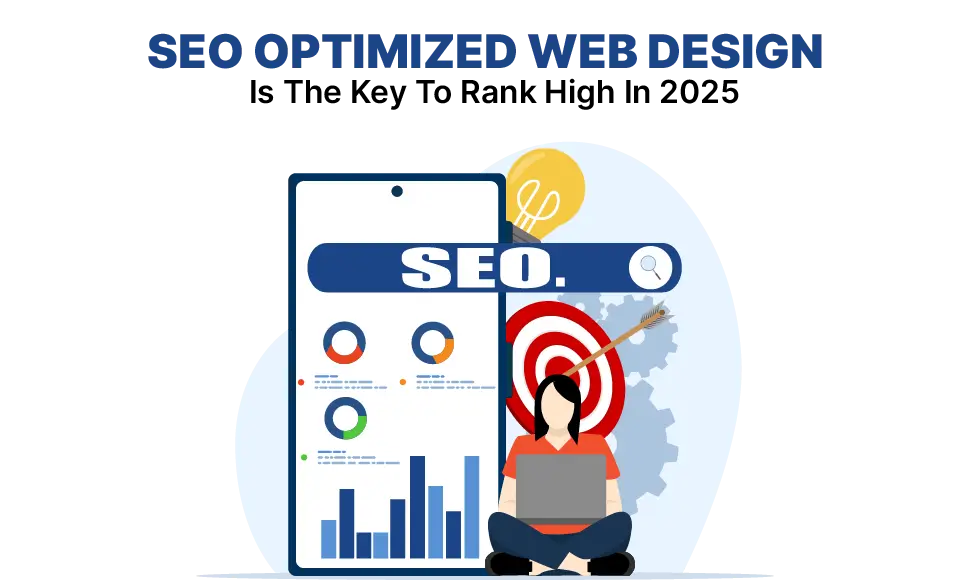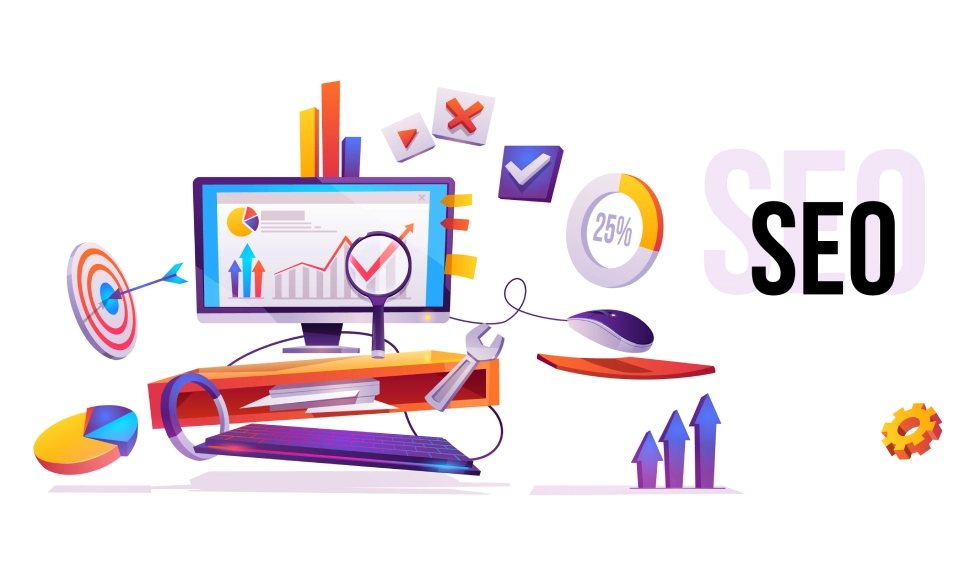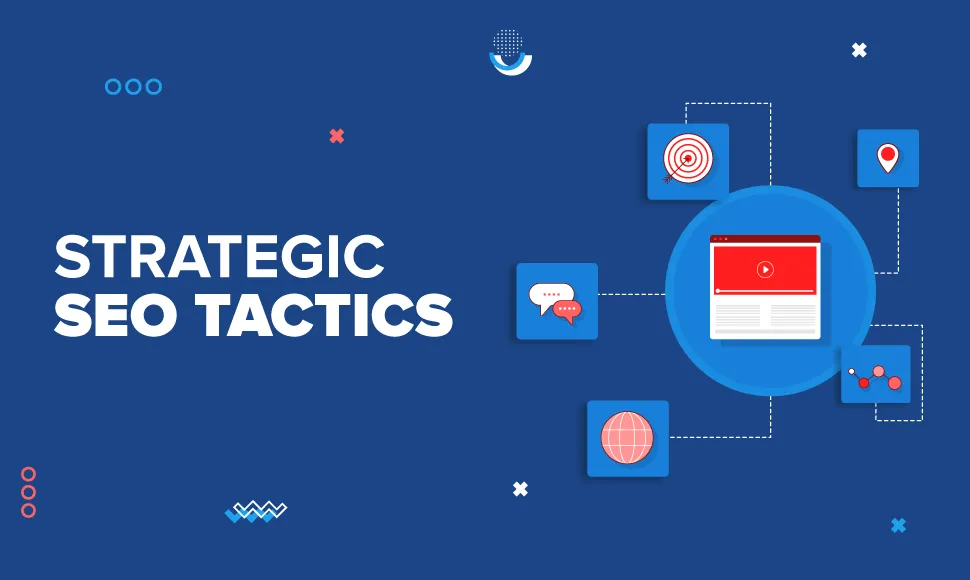
Why SEO-Optimized Web Design is The Key to Rank High in 2025?
Table of Contents
In the ever-evolving online world, web design is no longer just about aesthetics; it plays a crucial role in search engine optimization (SEO). As search engines continue to refine their algorithms, businesses and web designers must adapt by integrating SEO best practices into their design strategies. In 2025, SEO-optimized web design will be more important than ever for achieving higher rankings, improving user experience and increasing organic traffic. This blog describes the essential elements of SEO-friendly web design company Ahmedabad and how you can implement them to stay ahead in search rankings.
The Role of SEO-Optimized Web Design
SEO-optimized web design refers to creating a website with search engine best practices in mind. This involves structuring the site in a way that makes it easy for search engines to crawl and index while also ensuring an excellent user experience. A website that balances design aesthetics with SEO principles is more likely to achieve higher rankings. Choosing the best web design company in Ahmedabad ensures that your site is built for performance and search visibility.
Key Elements of SEO-Optimized Web Design
1. Mobile-First Design is Non-Negotiable
With mobile devices accounting for the majority of web traffic, Google has fully embraced mobile-first indexing. This means that Google primarily crawls and ranks the mobile version of a website rather than the desktop version. Websites that are not optimized for mobile will struggle to rank higher in search results.
How to Optimize for Mobile SEO:
- Use a responsive design that adapts to different screen sizes.
- Optimize page speed by compressing images and minimizing code.
- Ensure buttons, menus and links are touch-friendly and easy to navigate.
- Use mobile-friendly fonts and readable text sizes.
2. Website Speed and Core Web Vitals
One of the most critical aspects of SEO-optimized web design in 2025 is website speed and Core Web Vitals. Google considers these metrics when ranking websites and poor performance can negatively impact rankings.
a. Optimize Loading Speed
- Minify CSS, JavaScript and HTML (Remove unnecessary code)
- Enable compression (Gzip, Brotli) to reduce file sizes.
- Use a Content Delivery Network (CDN) for faster global access.
b. Optimize CSS & JavaScript
- Minify & defer JavaScript (async or defer to load after main content.
- Use critical CSS inline and load non-essential styles asynchronously.
Website speed directly impacts user experience and SEO. Core Web Vital Largest Contentful Paint (LCP), First Input Delay (FID) and Cumulative Layout Shift (CLS) measure key aspects of performance. LCP tracks load time, FID measures interactivity and CLS evaluates layout stability.
Optimizing these factors ensures fast, engaging and user-friendly websites, improving rankings. A website design company in Ahmedabad can implement these improvements effectively.
c. Implement Lazy Loading and Caching
- Enable lazy loading for images & videos.
- Set up browser caching to store static files.
3. User Experience (UX) and Site Navigation
A well-structured website with intuitive navigation enhances user experience and helps search engines crawl your site effectively. Google values websites that provide a seamless experience to visitors.
Best Practices for UX Optimization:
- Use a clear site structure with easy-to-follow menus.
- Implement breadcrumbs to help users and search engines understand page hierarchy.
- Reduce the number of clicks required to reach important content.
- Use internal linking to guide users and distribute link equity.
4. Schema Markup for Rich Snippets
Structured data, also known as schema markup, helps search engines understand the content on your site. Implementing schema markup can lead to rich snippets, which enhance your search listing with additional information like star ratings, FAQs and product details.
How to Use Schema Markup:
- Add FAQ schema for common questions and answers.
- Use product schema for eCommerce sites to display prices and availability.
- Implement review schema to highlight customer ratings.
- Apply article schema for blogs to enhance visibility in search results.
5. Image Optimization for SEO
Images play a vital role in web design, but if not optimized properly, they can slow down your site and hurt your SEO performance.
Best Image Optimization Techniques:
- Use descriptive file names with keywords (e.g., “seo-optimized-web-design.jpg” instead of “image1.jpg”).
- Include alt text for accessibility and better indexing.
- Compress images using tools like TinyPNG or ImageOptim.
- Utilize next-gen formats like WebP for faster loading times.
6. Secure and Accessible Website (HTTPS)
Website security is a key ranking factor and Google prioritizes HTTPS sites over HTTP. Having an SSL certificate ensures encrypted communication, making your site more secure for users and improving trustworthiness.
Steps to Ensure Security and Accessibility:
- Install an SSL certificate for HTTPS encryption.
- Ensure your site is accessible to all users, including those with disabilities.
- Follow WCAG (Web Content Accessibility Guidelines) to make content readable and navigable.
7. SEO-Friendly Content
As we know, content remains king in SEO. Search engines prioritize websites that offer valuable, relevant and well-structured content that meets user intent.
Tips for Creating SEO-Friendly Content:
- Conduct keyword research to find relevant search terms.
- Use header tags (H1, H2, H3) to structure content.
- Write engaging meta descriptions to improve click-through rates.
- Keep content fresh and updated to maintain relevance.
8. Optimizing for Voice Search
Voice search is on the rise and optimizing for conversational queries can help improve your rankings. People tend to use longer, more natural phrases in voice search compared to text-based queries.
How to Optimize for Voice Search:
- Focus on long-tail keywords and question-based queries.
- Use FAQ pages to answer common questions concisely.
- Structure content using schema markup for better visibility in voice search results.
Final Thoughts:
As search engines evolve, SEO-optimized web design remains a key factor in achieving higher rankings in 2025. Websites that focus on user experience, fast loading speeds, mobile responsiveness and Core Web Vitals will have a competitive advantage. Implementing best practices for website speed, structured content and accessibility ensures long-term SEO success. Partnering with a reliable web design company in Ahmedabad can help businesses achieve these goals efficiently.
 +91 98792 74063
+91 98792 74063












